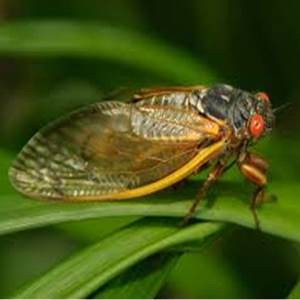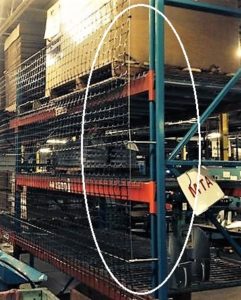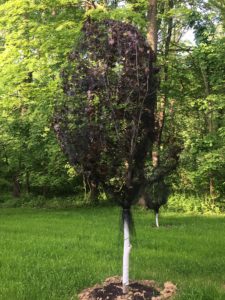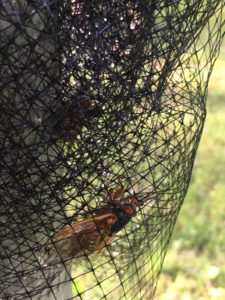Want to make your garden even more green? There are a number of different ways you can make your garden more environmentally friendly, whether it’s big or small and no matter what your level of experience, there is plenty that you can do to make a difference, and your local wildlife will certainly thank you for it! Read more ›
Role of Plastic Netting in the Filtration Industry
Role of Plastic Netting
The role of plastic netting in the filtration industry is not singular. The wide variety of filtration and separation systems and media results in a wide range of uses and functions for plastic netting. The major functions of plastic netting in filtration can broadly be categorized as 1). Facilitating the flow of fluids, 2). Supporting, 3). Protecting, 4). Reinforcing, and 5) Filtering. Read more ›
Product Characteristics of Square and Diamond Mesh
Joint Structure
Although both diamond netting and square netting are extruded, the processes used to produce the products result in quite different product characteristics, which may be important in some applications. Diamond netting is produced with the strands in each direction overlaying each other. The joint structure of the product can be described as a strand over another strand. The overall thickness of the product will essentially be twice the thickness of each strand, although there may be some melding of the strands at the joint. Normally, the strands in each direction are produced uniformly, and the product looks the same from one side of the material as the other. This type of netting is marketed as “bi-planar”, as both sides are structurally the same, the strands forming a plane or channel along the net. Read more ›
Plastic Netting – Square, Diamond and Oriented
Types of Plastic Netting
There are fundamentally two different kinds of plastic netting in terms of strand structure, diamond netting and square netting. Further, there are two different processes that result in distinct product characteristics; extruded (or cast) netting and oriented netting. Read more ›
The Extrusion Process of Plastic Netting
The Extrusion Process
For those not familiar with extruded plastic netting, it’s perhaps best to begin by discussing what extruded plastic netting is not. It is not woven mesh. It is not perforated. It is not molded. Although all of these processes produce materials with holes, each process has its own nomenclature for defining what’s there (i.e. strands, joints, etc.) and what’s not there (holes). The same is true for the extrusion process.
The extrusion process is a continuous process, which involves Read more ›
Cicada Netting Successfully Installed!
This years Cicada outbreak was located in Ohio, Pennsylvania, and West Virginia. Here is an example of how Cicada netting from Industrial Netting was used by one of our customers!
Cicada Control Netting for This Years Outbreak!
 Don’t let Cicadas destroy your trees and shrubs. You can protect young trees and shrubs with 1/4-inch mesh insect netting from Industrial Netting.
Don’t let Cicadas destroy your trees and shrubs. You can protect young trees and shrubs with 1/4-inch mesh insect netting from Industrial Netting.
Cicadas spend their brief life eating and mating. Females cut slits in small branches of deciduous trees laying up to a dozen eggs in each and causing the branch to die. A single female produces up to 600 eggs!
Protect Products from Falling During Transport with Conveyor Guard Safety Netting
Prevent serious injuries in warehouses and distribution centers with Plastic Conveyor Guard Safety Netting from Industrial Netting. Overhead Conveyors, inclines, and vertical conveyors need the appropriate guarding in order to prevent products and packages from falling during transport.
Protect your workers from injury while also preventing costly damage to your products. Install RackGuard, conveyor guard netting along conveyor sides to form a durable, see-through, containment wall.
Industrial Netting is a founding member of ProGMA. The Protective Guarding Manufacturers Association showcases a video representing this application. Check it out to, visually, see the benefit that Safety Netting from Industrial Netting can provide within your warehouse.
RackGuard Safety Netting for Elevated Work Platforms (Mezzanines)
Elevated Work Platforms – sometimes called Mezzanines – can be a hazard to warehouse workers below. Provide safety on your facilities work platforms by attaching plastic netting to guard rails, forming a safety barrier.
Industrial Netting is a founding member of The Protective Guarding Manufacturers Association (ProGMA). OSHA Fall Protection standard 1926.502 requires paneling or screening for anywhere there are tools, equipment, or material that are piled higher than the top edge of a toe board or kick plate. Adding protection is financially prudent. Plastic Mezzanine Safety Netting from Industrial Netting is a simple, cost effective, solution for protecting employees below from loose objects that may fall or be kicked off of elevated work platforms. Read more ›
Installing RackGuard Plastic Safety Netting Using Eye-bolts
Storage racks are designed to have pallets rest on and across the  rack beams. Safety Netting is typically installed using some kind of offset to keep pallets from coming into contact with the netting when a pallet overlaps the storage rack beams.
rack beams. Safety Netting is typically installed using some kind of offset to keep pallets from coming into contact with the netting when a pallet overlaps the storage rack beams.
See how a southern Minnesota factory installed RackGuard Pallet Rack Safety Netting using off-the-shelf eye-bolts and cabling to create a safer warehouse environment. The steps and photos below illustrate a simple and successful off-set installation of safety netting that fits virtually any pallet rack system. Read more ›


